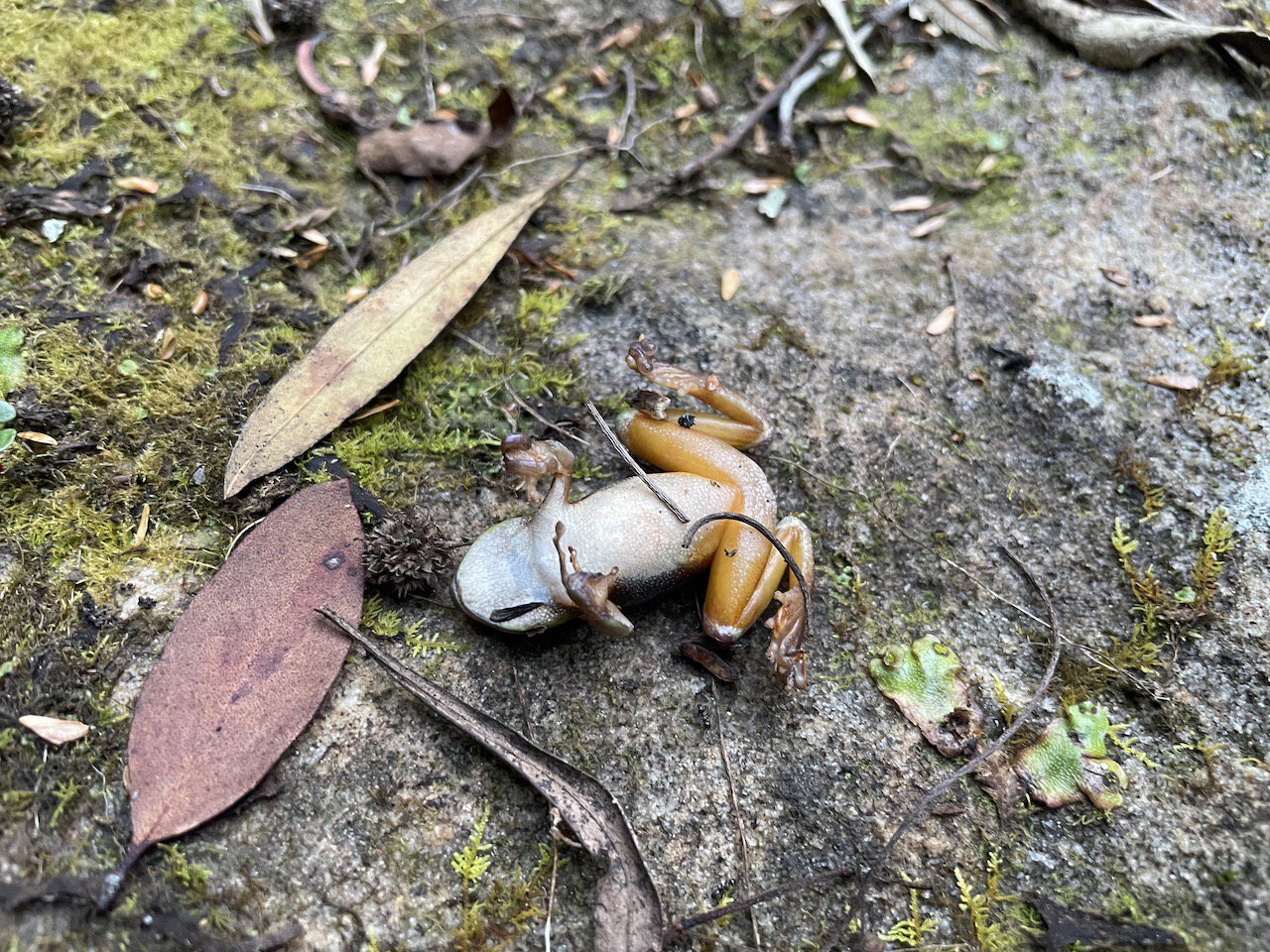Croaked: The 2021 frog die-off
The first reports of dead frogs came through in June. Posts of dead Green Tree Frogs (Litoria caerulea) began showing up in my Facebook feed.
Rather than the plump, bright green frogs we all know and love, they were thin and strangely reddish-brown in colour. While upsetting, I wasn’t immediately alarmed. As all things, frogs die, and sick or old frogs often die at the onset of winter.

© Australian Museum
But the reports of dead and dying frogs didn’t stop, and I began getting calls and emails from concerned people all over eastern Australia. This wasn’t normal. Something serious was going on.
Not being able to travel due to COVID-19 restrictions, I started reaching out to the public via the media to report sick and dead frogs. It was the only way I could hope to figure out what was happening, and why. After an article I wrote with Dr Karrie Rose from Taronga’s Australian Registry of Wildlife Health appeared in The Conversation, the reports came flooding in. Throughout July, August, September and October, I received email after email from concerned citizens, sharing photographs and telling me of sick and dead frogs. Their descriptions were heartbreaking. “I’ve always had around 30 frogs come each night during summer and now they’re all dead,” one person wrote. Another told me, “I have found dead frogs on my verandah as well as in my house, inside cupboards and on my sink... It is so sad to see them sick and dying.”
One person described how the frogs lost their vivid colour:
From bright green they started changing to fawn then brown, losing condition as time passed. One of my favourites became dark brown and skeletal on dying.

© S McGovern
It was larger in scale and more worrying than I ever suspected.
As I write this, we’ve received almost 1500 reports of sick and dead frogs across Australia, concentrated on the east coast of New South Wales. Most reports are of our beloved Green Tree Frog, a relatively large species that commonly lives in and around us, but there have been over 30 different native frog species reported dead and dying, including threatened species such as Green and Golden Bell Frogs (Litoria aurea) and Giant Barred Frogs (Mixophyes iteratus).
We urgently need to understand why frogs are dying and what this mortality event’s wider impact will be. With dozens of Australia’s frog species already on the brink of extinction, this could tip many frog populations over the edge. Frogs are a vital part of healthy ecosystems, and any impacts on frog populations will have ripple effects throughout entire ecosystems.

© Australian Museum
The most likely cause is a disease called chytridiomycosis, caused by the amphibian chytrid fungus (Batrachochytrium dendrobatidis).
This disease infects the skin of frogs and for the last 40 years or so, it’s been responsible for declines and extinctions in many Australian frog species. But if it is this disease, why is it causing so much havoc now, when it’s been around for decades? Could frogs be stressed by environmental conditions such as drought and bushfires? Is it another disease, toxins, or a combination of many things?
Thanks to the help of hundreds of people across Australia, we have been working to obtain the samples we need in order to get to the bottom of this.

© Australian Museum
It’s been people-power to the rescue, with sick frogs being taken to collaborating vets and dead frogs stored in freezers across NSW. At the Australian Museum, we are already testing the samples that we have received and are gathering vital clues. With colleagues in government and conservation organisations across Australia, we are working desperately to get a clearer picture and form conservation recommendations.

© Australian Museum
As temperatures rise and travel restrictions ease, we will begin assessing the impact of this event on our frog populations in the wild, conducting surveys of frogs across eastern Australia, assessing their health. We will also be examining data submitted via FrogID to understand the impact on a broad scale. This winter has been an incredibly sad time for our already imperilled frogs, but there is hope. This awful event has proven that people care about Australia’s frogs and are willing to come together to solve a frog murder mystery on a grand scale. Working together, we will achieve an understanding of the cause and impact of this event, and what we need to do to save our frogs.
You can help
- Report sick or dead frogs by emailing locations and photos to calls@frogid.net.au
- Record calling frogs with the free FrogID app, download here












